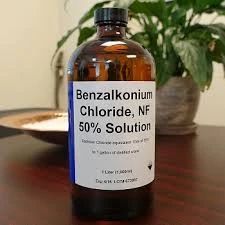function of poly aluminium chloride in water treatment
The Function of Poly Aluminium Chloride in Water Treatment
Water treatment is a crucial process in ensuring the provision of clean and safe drinking water. One of the key chemical agents employed in this field is Poly Aluminium Chloride (PAC), a coagulant widely used in various water treatment applications. The effectiveness of PAC in removing impurities and enhancing the clarity of water makes it a subject of interest for researchers and professionals alike.
Composition and Nature of Poly Aluminium Chloride
Poly Aluminium Chloride is a polymeric form of aluminium chloride that is characterized by its high charge density. It is often formulated in various basicity levels, allowing it to be tailored for specific treatment scenarios. PAC is typically available in both solid and liquid forms, which makes it versatile for different applications. Its chemical composition allows it to interact effectively with suspended particles in water, facilitating their removal through the coagulation and flocculation processes.
Mechanism of Action
The primary function of PAC in water treatment is to enhance the coagulation process. When PAC is added to water, it dissociates to release aluminium ions. These ions have a positive charge that neutralizes the negative charges of suspended particles, including silt, clay, and organic matter. As the charges neutralize, these particles aggregate together to form larger flocs.
Once these flocs grow in size, they become heavy enough to settle out of the water column through sedimentation. This removal process significantly improves water clarity and quality. In many cases, the addition of PAC can reduce the turbidity of water to safe levels far more efficiently than traditional coagulants such as alum (aluminium sulfate).
Benefits of Using PAC
function of poly aluminium chloride in water treatment

One of the major advantages of PAC is its effective performance over a wide pH range, making it suitable for various water sources, including surface water, groundwater, and even wastewater
. Its higher charge density allows for the use of lower doses compared to other coagulants, which can lead to cost savings in treatment processes.Additionally, PAC typically produces less sludge compared to conventional coagulants. This reduction in sludge production is beneficial for downstream processes as it minimizes the burdens on filtration systems and reduces the costs associated with sludge disposal. The reduced volume of sludge generated also contributes to a more sustainable approach to water treatment.
Moreover, PAC is known for its ability to remove a range of contaminants, including heavy metals and organic compounds. This makes it not only effective for drinking water treatment but also for industrial applications, where water quality is of paramount importance.
Applications and Regulatory Considerations
Poly Aluminium Chloride is used extensively in municipal drinking water and wastewater treatment facilities. It plays a key role in removing pathogens, which is essential for meeting public health standards. Regulatory agencies often monitor the effectiveness of coagulants like PAC to ensure that treated water meets safety regulations.
As environmental concerns grow, the demand for efficient and eco-friendly water treatment solutions has increased. The use of PAC aligns with these goals by offering an effective means of treating water while minimizing the chemical footprint.
Conclusion
In conclusion, Poly Aluminium Chloride plays a crucial role in modern water treatment processes. Its ability to efficiently coagulate suspended particles, improve water clarity, and reduce sludge production makes it an invaluable tool for water treatment professionals. As water quality challenges continue to evolve, the application of PAC in various contexts underscores its significance and effectiveness in delivering safe and clean water to communities around the world. The continued research and development in this field will further enhance the capabilities and applications of PAC, bolstering efforts to maintain healthy water supplies.
-
Understanding Polycarboxylic Acids: Properties, Applications, and Future PotentialNewsJul.28,2025
-
Scale Inhibitor Explained: How to Protect Your System from Limescale and Hard Water DamageNewsJul.28,2025
-
Scale and Corrosion Inhibitors: Essential Chemicals for Industrial Water System ProtectionNewsJul.28,2025
-
Polyaspartic Acid: A Biodegradable Polymer for Sustainable ChemistryNewsJul.28,2025
-
Isothiazolinones: A Versatile Antimicrobial Class with Industrial Power and Regulatory ChallengesNewsJul.28,2025
-
A Deep Dive into 2-Phosphonobutane-1,2,4-Tricarboxylic Acid (PBTC)NewsJul.28,2025





